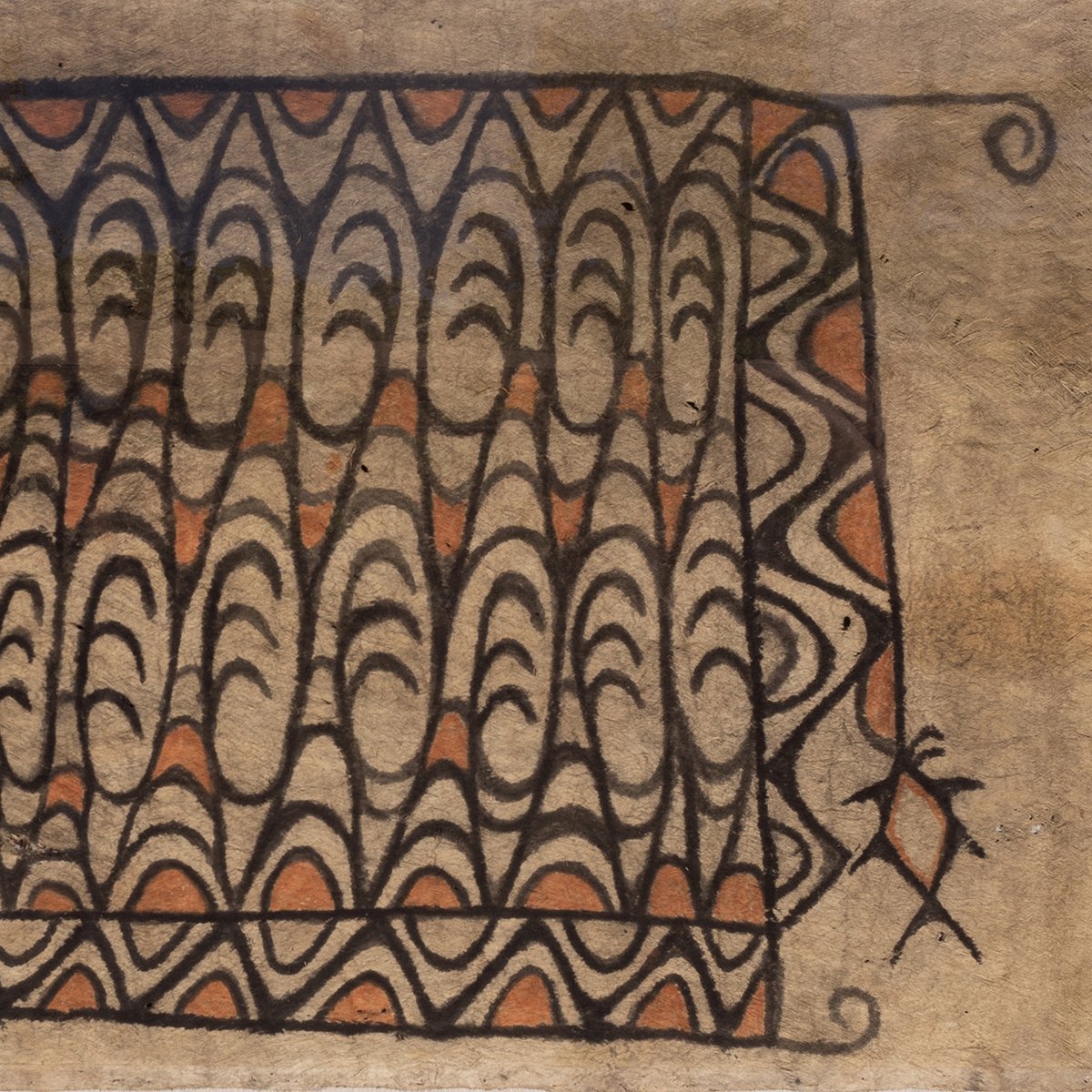 Image 1 of 3
Image 1 of 3

 Image 2 of 3
Image 2 of 3

 Image 3 of 3
Image 3 of 3




Lake Sentani Decorated Barkcloth Maro
Papua New Guinea
Paper mulbery with natural dyes
27 1/2" x 52" with archival custom frame 35" x 58"
Provenance: Collection G.H.R. Von Koenigswald (credited with the discovery of Java Man)
Kundesthandel Klefisch GMBH, Cologne, Germany May 7, 2007, Lot 229
Ed and Mina Smith Collection, California
Traditionally the women of Lake Sentani beat bark cloth into fine sheets of tapa. Skill in creating both plain and decorated tapa was central to a woman's identity, and her level of prestige. A stunning early documented example.
Publication: Kultuurpatronen Delft, April 3 1961, p. 135 fig. 3, Bulletin Ethnografisch Museum Delft,
Dr. K.W. Galis, Nogmaals Sentani, Kultuurpatronen Delft, b-11 1969, p. 78 afb.13
Papua New Guinea
Paper mulbery with natural dyes
27 1/2" x 52" with archival custom frame 35" x 58"
Provenance: Collection G.H.R. Von Koenigswald (credited with the discovery of Java Man)
Kundesthandel Klefisch GMBH, Cologne, Germany May 7, 2007, Lot 229
Ed and Mina Smith Collection, California
Traditionally the women of Lake Sentani beat bark cloth into fine sheets of tapa. Skill in creating both plain and decorated tapa was central to a woman's identity, and her level of prestige. A stunning early documented example.
Publication: Kultuurpatronen Delft, April 3 1961, p. 135 fig. 3, Bulletin Ethnografisch Museum Delft,
Dr. K.W. Galis, Nogmaals Sentani, Kultuurpatronen Delft, b-11 1969, p. 78 afb.13
Papua New Guinea
Paper mulbery with natural dyes
27 1/2" x 52" with archival custom frame 35" x 58"
Provenance: Collection G.H.R. Von Koenigswald (credited with the discovery of Java Man)
Kundesthandel Klefisch GMBH, Cologne, Germany May 7, 2007, Lot 229
Ed and Mina Smith Collection, California
Traditionally the women of Lake Sentani beat bark cloth into fine sheets of tapa. Skill in creating both plain and decorated tapa was central to a woman's identity, and her level of prestige. A stunning early documented example.
Publication: Kultuurpatronen Delft, April 3 1961, p. 135 fig. 3, Bulletin Ethnografisch Museum Delft,
Dr. K.W. Galis, Nogmaals Sentani, Kultuurpatronen Delft, b-11 1969, p. 78 afb.13

